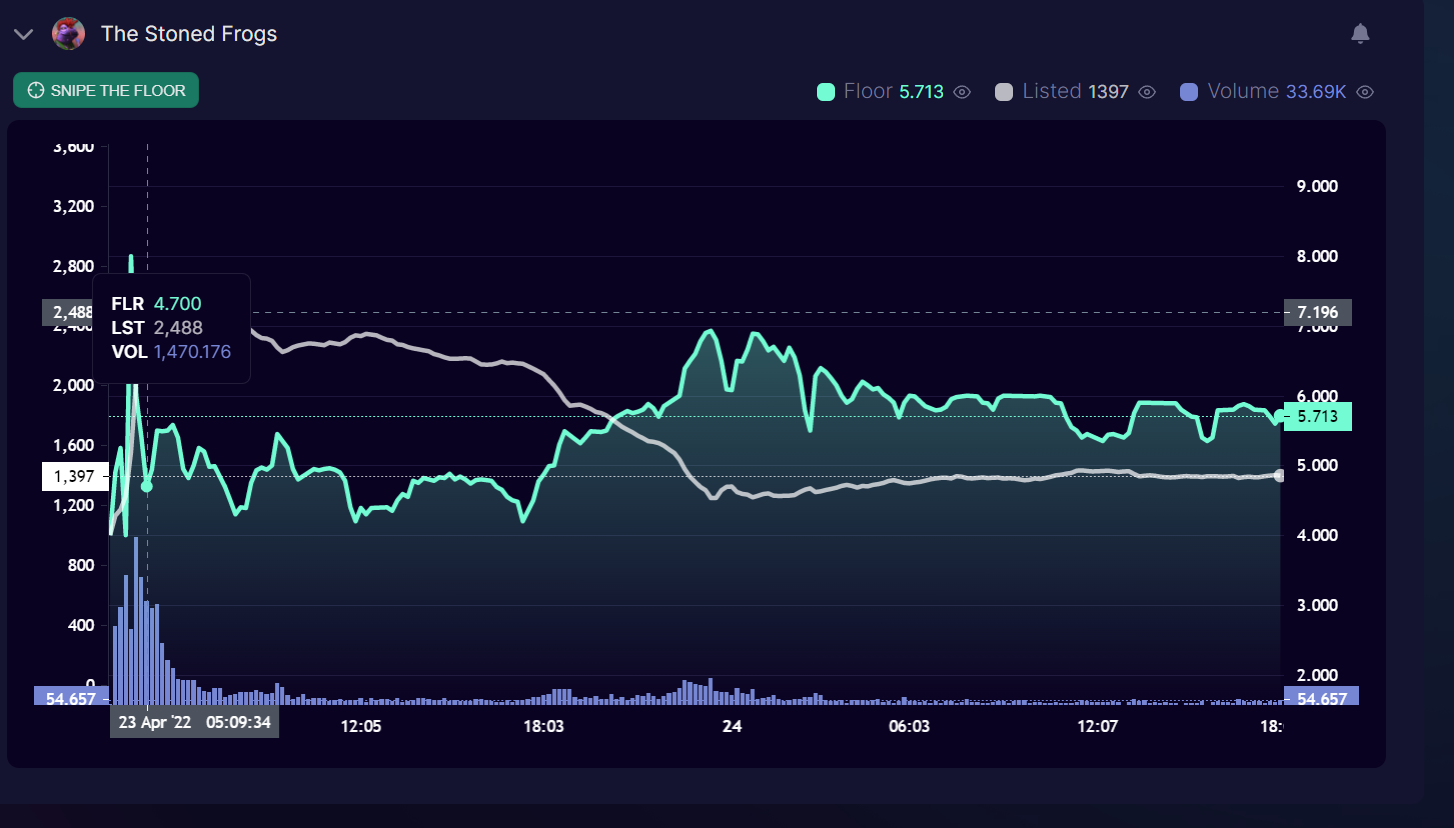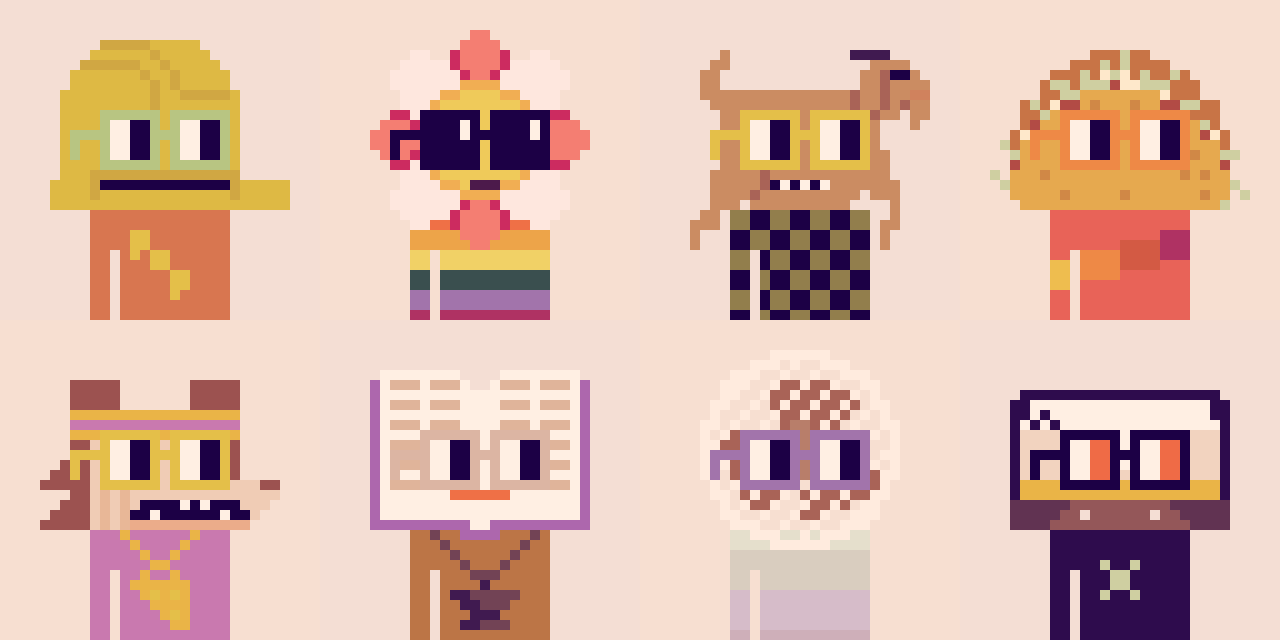As we approach the end of the year, I have to say that 2021 has been the year that keeps on giving. Crypto prices soaring near to ATHs, the introduction of the controversial metaverse, and even the NFT hype.
Yes, the NFT hype is real. The total trading volume of NFTs increased by 704% from the second to the third quarter in 2021, reaching a record high of $10.7 billion. Furthermore, a simple keyword search on Google Trends will show you that interest in NFTs has increased from “1 to 100” in this year alone. To provide context, 0 interest is the lowest while 100 interest is the highest.
If this doesn’t convince you, even Collins’ Dictionary named “NFTs” as their Word of the Year for 2021! Truly, NFTs have had an amazing run this year.
However, what makes NFTs so good? Anyone with a rational mind should know the “intrinsic value” of NFTs before investing in them. In this article, we’ll be discussing the hype behind NFTs and what makes this industry so valuable.
The Calm Before The NFT Hype
Like all other new creations, NFTs started off slow and steady when they first came to life. While the first NFT like Kevin McKoy’s “Quantum” was launched back in 2014, and digital art was already available back in 2012, NFTs were unknown to most even in the crypto space.
But when Larva Labs released the first modern-day NFT collection “Cryptopunks” in 2017, that was when the NFT rocket really started taking off. People started to realize that this non-fungible token thing was a digital asset only second to cryptocurrency. Hence, the influx of investors into the NFT market began.
However, even with people making millions off NFTs, the general public still didn’t know about their existence. Heck, most didn’t even care about crypto. Either way, NFTs started getting extremely popular (and controversial) with the masses in 2020.
Here’s what set off the hype.
The NFT Hype: Trigger
On 11 March 2021, the most expensive NFT to date was sold — for $69.3 million. This was Beeple’s (the artist’s) collage-style NFT, named “Everydays: The first 5000 days”.
The sale of this NFT truly shocked the world. To sell a digital piece of art for 69 million dollars was absurd at that time, and I’m sure it sounds “fake” to most people even today. Because for a small group of early investors in NFTs to push up a digital artwork’s price to 69 million was no easy feat.
As such, this kickstarted more aspiring entrepreneurs to start their own NFT collection, and perhaps get their slice of the pie in the NFT world. And so this is how the hype started.
But Beeple’s digital artwork is just the cover story for the hype of NFTs. Can one super-expensive NFT truly determine the hype behind NFTs? I think not. There is a multitude of factors behind why early adopters of NFTs entered the space in the first place, thus causing the hype.
The Factors Behind The NFT Hype
While there are many theories explaining the rise of NFTs, I believe that ownership, the creation of a new and promising industry, as well as the future use of digital art drove the NFT hype. Eventually, it’s the underlying value of an asset that makes smart investors and collectors want to have it.
Ownership
Ownership is the “intrinsic value” behind NFTs. Intrinsic value is a term used in options trading and stock market investing, referring to the true value of an asset. This intrinsic value is calculated using assumptions like its cash flow in the near future, and simply shows the asset’s worth (or how much other people are willing to pay for it).
Regarding digital assets, intrinsic value seems redundant. For starters, there’s no real business model for NFTs, and thus zero cash flow in most cases. No cash flow usually would mean zero intrinsic value, so NFTs technically aren’t worth anything. Furthermore, NFTs can’t be torn apart and used as materials in real life, undermining them even further in real-world value.
However, the hidden intrinsic value of NFTs doesn’t lie in the art itself, but the proof of ownership in the blockchain. Since every NFT is unique and cannot be replicated in the blockchain, they have a feature of “scarcity”.
Of course, the value in “proof of ownership of an NFT” will depend on the blockchain. If the blockchain fails to function properly, allow copies of an NFT, or people somehow lose faith in it, I fear the intrinsic value of NFTs may tumble to zero. In the end, humans want to have a stake in something that matters — this is what pushes up the value of NFTs.
Creation of A New and Promising Industry
The untapped potential of blockchain technology, cryptocurrency, and hence NFTs is also one factor behind the NFT hype.
For centuries, people have been relying on one thing to have a benchmark for value. FIAT. Likewise, we have been counting on one entity to ensure fairness and regulation of our transactions for several millennia, the government.
With the introduction of a revolutionary technology that can ensure fairness in transactions, incorruptibility, and yet reliability, we are at the turning point of society as we know it. Money that cannot be mishandled, public ledgers that cannot be hidden, and of course, art that cannot be duplicated.
Since the blockchain world along with other web3 products shows so much potential, most people cannot resist jumping into it. NFTs will peg along with the value of cryptos and other digital assets in the same metaverse, hence the rise of their value.
As the blockchain becomes more mainstream, and perhaps more widely accepted compared to traditional methods of transaction, NFTs could become the next modern art. In that way, these digital assets would gain a reputation amongst the masses, and create a “brand identity” that has a massive following. This is also one of the ways NFTs will rise in intrinsic value, and fuel the hype to greater heights.
Future Use of Digital Art
When NFTs first became a thing, everyone thought they were just digital pieces of art for appreciation, and nothing more. While we acknowledge the importance of arts patronage, NFTs surely have more to offer other than their artistic element.
With the transition of online games to blockchain games, the use of NFTs is becoming real. In a previous article, I explained the impact that NFTs can bring to games like Axie Infinity, and their integral part in the metaverse.
Likewise, people are starting to use NFTs as digital access tokens, passes to online events, and even identification passwords for something exclusive. As a unique smart contract on the blockchain, NFTs aren’t simply pieces of art; they’re one-of-a-kind pieces. Thus, NFTs are the perfect tool to gain access to private events, especially since they can’t be forged or manipulated.
Yes, NFTs could be the next VIP Dinner token you’ll receive in the near future! Looking at NFTs for their exclusivity rather than the arts patronage, we can see why the hype for digital art is there. People are buying a fragment of the future, the art is just a bonus.
So, these are the three main factors I believe are why the NFT hype is ongoing. Whether there is increasing adoption by celebrities, fairytales of NFT artists making millions, or even the Government’s crackdown on web3 products, these are all push factors for the NFT boom.
At this point, you should know why NFTs even rose to fame. If you haven’t been paying attention, it’s simply because NFT-enthusiasts have been driving prices of digital arts so high, till a point where mainstream media had to take notice of this “hidden gem”.
But what makes an NFT project so successful? Why can’t anybody create an NFT project that makes millions? Read on to find out.
What Makes An NFT Project Hype Worthy?
If making money off NFTs were so easy, everybody would be doing it. Why would Beeple’s NFT be worth $69 million, when many other NFT collections all end up as failures? Most NFT projects have a story behind the art, which ultimately is the key reason for their success.
Holders Benefit
Many NFT collections are simply memberships to a club. By holding an NFT, you’re officially a member of an exclusive group only accessible by holders. To some, the idea of becoming a part of a special group is enough for them to buy an NFT.
Typically, such communities will have some member benefits included. This could be hard-to-find insider information, access to a cool real-life location, or even just a space to chill and hang out. It may sound absurd, but people are willing to pay for someplace to feel special and be surrounded by like-minded individuals.
For example, the Bored Ape Yacht Club NFT group includes all their holders in an invite-only Discord group. They have also airdropped free NFTs from the Bored Ape Kennel Club Dogs (a by-the-side project), which can get resold at a decent price. Most notably, BAYC has THE BATHROOM, a digital wall where members can paint a chunk of the artwork.
In summary, it’s benefits like these and the community created that give people the incentive to hop into an NFT project.
Scarcity
Akin to what we talked about earlier in the “Ownership” section, scarcity is another factor that differentiates a valuable NFT from a not-so-in-demand one. Depending on how rare, difficult, or time-consuming it is to obtain the NFT, that could determine the value of the NFT.
Collections like CryptoKitties and Cryptopunks were the pioneer NFT projects, so their scarcity comes with age. A hundred years down the road, an NFT project created today could be considered “rare”.
Since literally all legit NFTs are unique, the “scarcity” factor has to be measured in relation to all other NFTs. Age is a good factor to define rarity, and so is the complexity of creating one, like if all the pieces of art are hand-drawn from scratch.
Celebrity-endorsed or established brands crafted NFT collections can also be counted as scarce and coveted projects. It isn’t often that companies will create NFTs, so exclusive collections related to big names in real life will certainly command a high price.
Story Behind The NFT
Last but certainly not least, the story behind the NFT matters as well. This is the core team’s journey behind the NFT project, and if your story connects well with the NFT enthusiasts, your project might just take off!
I believe you’ve heard of Weird Whales, the successful NFT collection created by a 12-year-old boy a few months ago. While this project did not exactly have any holders’ benefits or scarcity to them, the story of a young boy interested in NFTs won the hearts of the people. In Hollywood style, the project blew up on Twitter overnight.
Yes, the power of social media can be used to your advantage, even in the world of NFTs. Hence, having a story or more importantly, a mission behind the NFT collection is a great way to hype up your NFT project.
Today, the power of memes and the internet can make (or break) your NFT. Having a solid goal behind the project could get you a seat on the NFT hype train!
A Word About Art Appreciation and The Danger of NFT Hype
In this article, we have talked about the factors for the NFT boom, as well as what differentiates successful from failed NFT collections. However, there are multiple dangers, both on a personal and global scale, that could happen if you’re not careful.
Arts Patronage Could Vanish
For starters, art appreciation and arts patronage could be heavily impacted by the NFT hype. Before the hype, many people were in this space to explore digital art and tinker with multiple interesting features in an interesting environment. After the boom, unfortunately, comes the capitalist wave of people.
Businessmen have loaded up tons of NFTs, hoarding the most valuable pieces and reselling them at higher prices. This has trickled down to even the small-time holders, making the NFT space more of a marketplace than a community.
In a previous article, I compared the NFT space controlled by big businessmen to the Renaissance period — and we should just abandon NFTs if it got to that stage. With the NFT hype fueling the profit-making in this industry, arts patronage is becoming almost totally irrelevant, and anything that makes dollars, makes sense.
False Hope For Young Artists
Next, the NFT hype is creating false hope for many aspiring young artists. Recently, there have been quite a few success stories of young artists making hundreds and thousands of Ethereum just from selling NFTs. Some of these NFTs were just individual pieces of art, not even a collection that could have been “hype-worthy”.
The extreme luck that these creators had created false hope in the young artist community. While artistic skills can be trained and improved, becoming an internet sensation or having an extremely relatable story can’t. Praying that luck is on their side when making NFTs is the wrong way to go, and it’s saddening to see people fall into that trap.
To list a collection on NFT marketplaces like Opensea or Rarible, artists have to pay a rather hefty minting fee. Not to mention that they must have spent days or months designing the NFTs to perfection. To see nobody even bat an eye at your NFTs could be depressing, and all that effort thrown down the drain may discourage artists from ever being a part of the community again.
Environmental Issues
One of the more pressing problems about NFTs is the environmental concerns that come with them. It’s undeniable — the world is changing, and it’s not for the better. As an NFT community, we wouldn’t want to speed up climate change.
But as Digiconomist suggests, an average NFT transaction emits around 48KG of carbon dioxide into the atmosphere. To put that into perspective, it takes more than 2 years for a regular tree to absorb that amount of carbon dioxide. Yes, a minute of memes undoing 2 years of work by a tree. Pretty worrying.
While we’re not aiming at tearing down the concept of NFTs entirely, having it on hype mode is definitely not good for our environment. NFT projects should have the ulterior motive of appreciating art, letting regular people take ownership of the future, and doing the common good. That being said, we should not encourage unthoughtful releases of NFTs in any way.
Summary
To conclude, NFTs have been hyped up this year. It could have been due to the factors discussed above, or it may have just been a stroke of luck to NFT holders around the globe. Either way, we should all remember the true purpose NFTs are here to serve, and try to do as much good with them as we can.








